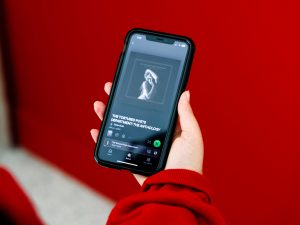 Associate Professor of Sport Management Brad Millington wrote a piece in The Conversation about the NBA's inaugural In-Season Tournament and the attention economy.
Associate Professor of Sport Management Brad Millington wrote a piece in The Conversation about the NBA's inaugural In-Season Tournament and the attention economy. This article written by Brad Millington, Associate Professor of Sport Management at Brock University, originally appeared in The Conversation.
The National Basketball Association’s inaugural In-Season Tournament wraps up this weekend. The tournament kicked off on Nov. 3 and will culminate in a championship game between the Indiana Pacers and Los Angeles Lakers on Dec. 9.
The tournament is something NBA commissioner Adam Silver has reportedly wanted to implement for years for a variety of reasons. One obvious potential benefit of the tournament is to generate revenue, as the Women’s National Basketball Association has already done with its own tournament, the Commissioner’s Cup.
According to Silver, inspiration for the tournament lies in international soccer cup tournaments. A famous analogue is the FA Cup in English football, which dates back to the 19th century.
But if you tuned into one of the In-Season Tournament games, you might have been surprised by what you saw — not the game itself, but the design of the court.
For tournament games, beige hardwood courts have been swapped out for shockingly colourful displays. Each team has its own design. The Phoenix Suns’ court is purple and teal from edge to edge. Lime green features prominently for the New Orleans Pelicans.
Whether tasteful or gaudy, the courts have this in common: they grab your attention.
Fighting for attention
The In-Season Tournament is playing out under the unique conditions of our present-day attention economy. The attention economy is the quest to monetize attention — most notably, by capturing and holding attention so as to sell it to advertisers.
Sport has a place of privilege in the attention economy, since sporting events are best watched live. This is beneficial to sports leagues and event organizers (who sell media rights) and, in turn, to sports broadcasters (who sell time for commercials during breaks in play).
But attention is a limited resource. The competition to seize our attention is fierce. A basketball broadcast now faces a long list of competing choices for viewers: other live-TV options, the bottomless content of social media, the entire Netflix catalogue and so on.
Not only that, our communication technologies call out to us. A push notification on your phone is an attention request. It’s an app saying, “Hey, look over here! I have something that’s worth your time.”
Sports are evolving under these very conditions.
Sports in the attention economy
Sports are changing in many ways in the attention economy. One option for sport leagues is to liven the pace of play. Major League Baseball embarked on such an effort this past season by introducing a pitch clock to keep pitchers and batters from taking too much time between pitches.
While this might shorten the game and leave less time for commercials, the potential upside is a snappier product — and perhaps, more engaged consumers.
Sports betting is a way of capturing attention as well. Both Canada and the United States have opened their doors to legal sports betting in recent years. This has come with backing from major sports leagues (despite past instances of opposition).
A recent advertisement from the sports betting operator FanDuel takes aim at “garbage time” — a phrase that denotes the meaningless final moments of a lopsided game when the outcome is already decided. FanDuel sees an upside to garbage time because there can still be betting outcomes on the line. Will the favoured team cover the point spread?
While the FanDuel advertisement doesn’t explicitly put it this way, the implication is this: sports betting is a way to hold viewers’ attention in circumstances where, in the past, they might have turned their focus elsewhere.
Changing the stakes
Another option in the attention economy is to restructure sports competition to change the stakes. This is what the NBA’s In-Season Tournament accomplishes.
For the NBA and its broadcast partners, the In-Season Tournament could squeeze more value out of early-season games. There has long been talk that the NBA’s 82-game regular season might be too long.
Like the WNBA Commissioner’s Cup, however, results in the NBA In-Season Tournament also contribute to regular season standings (excluding the championship game). Thus, instead of shortening the season, the In-Season Tournament gives regular season games additional stakes, and additional reason for excitement.
As one sports writer put it:
“The goal is modest, merely to ramp up interest in the league during a time when the NBA is mostly in an attention desert.”
Reasons to keep watching
For players and teams, there are financial and competitive motivations for the tournament: $500,000 apiece for winning players and a chance to hoist the newly-unveiled NBA Cup.
For fans, there is new reason to make early-season games appointment viewing, or at least to stop channel surfing at the sight of a flashy court. Indeed, a purple and teal floor screams out, “Hey, this is different, don’t touch that dial!” This is court design as push notification.
So far, the In-Season Tournament has garnered positive reviews. Players and teams seem to be taking it seriously, and there is initial evidence that tournament games are bolstering viewership.
Whether the tournament lasts as a yearly initiative is likely down to the product on the court, and not the courts themselves. In the attention economy, capturing attention is just the first step. From there, you have to hold on tight.
![]()








